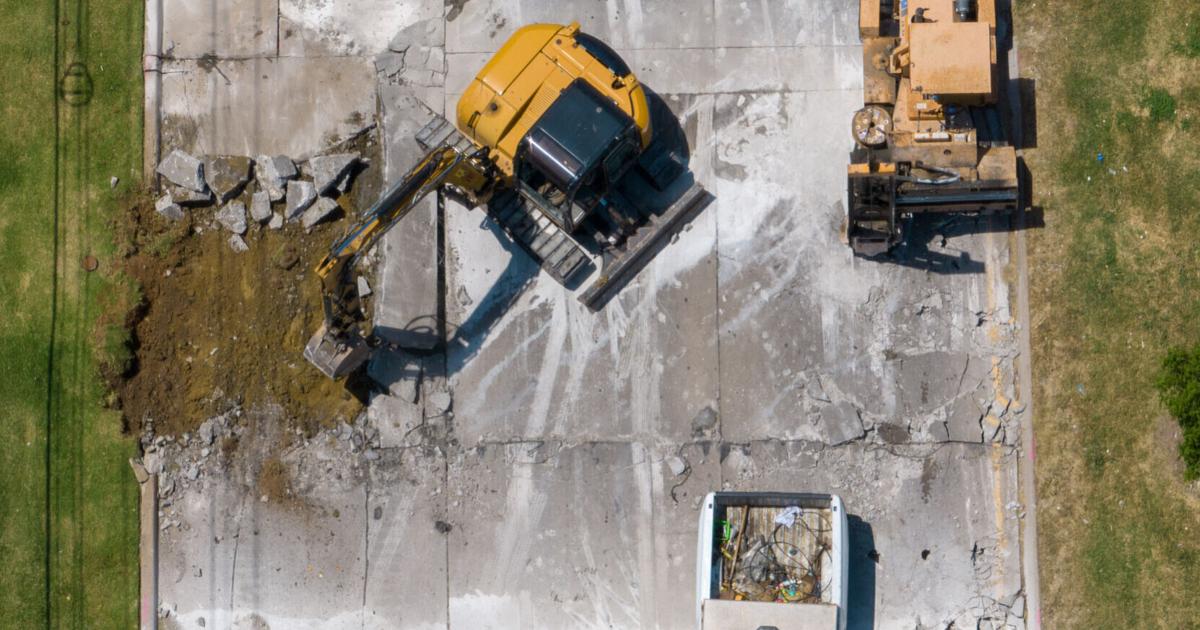
Steve Metzer
Tulsa World Capitol Bureau Staff Writer
Get email notifications on {{subject}} daily!
Your notification has been saved.
There was a problem saving your notification.
{{description}}
Email notifications are only sent once a day, and only if there are new matching items.
Followed notifications
Please log in to use this feature
Log In
Don’t have an account? Sign Up Today
OKLAHOMA CITY — The Oklahoma Department of Transportation has had to push back planning for scores of road projects across the state, including 11 in Tulsa County and 56 across the Tulsa region.
Executive Director Tim Gatz said Monday that forced delays in a total of 208 projects included in the state’s eight-year Construction Work Plan for fiscal years 2026-2033 were driven by historic inflation that has impacted heavy road construction in recent years.
Last year, the work plan reflected projects planned to be undertaken in coming years calculated to have a total value north of $8.62 billion. This year, after an 11% adjustment made to offset effects of inflation, projects on a trimmed-down list were calculated to have a value of about $7.74 billion.
Members of the Oklahoma Transportation Commission voted Monday to approve the modified plan along with a $500 million Asset Preservation Plan.
The eight-year plan shows 56 total “fiscally impacted” projects in ODOT’s District 8, which includes Tulsa County. The projects, to be pushed back by at least one year, were calculated to have a total value of $510.7 million.
The plan shows 11 projects impacted in Tulsa County. The most expensive, valued at $45 million, would involve nearly 5.5 miles of pavement rehabilitation on U.S. 75 north of its junction with Interstate 244. Another big project affected in the county would involve $28.4 million worth of work on the interchange at U.S. 169 at the Broken Arrow Expressway. A $10 million project would involve interchange work on U.S. 169 at 106th Street.
“We had to move (the) projects outside the confines of that eight-year window because of fiscal constraints,” Gatz explained. “The projects are still priorities, but they will take longer to get to.”
Referencing only fiscal year 2026, the plan identifies 34 projects set to advance in District 8 with a total value of $243.7 million. Over the course of the entire eight-year plan, a total of 240 projects are anticipated in the district with a grand total value calculated at $1.52 billion.
Gatz said about 18 years’ worth of normally anticipated inflation affecting transportation infrastructure has been compressed into just the last three years. As a result, planning for road and bridge projects has been hammered across the country. The director’s forward in the eight-year plan describes a “generational reduction” in buying power that has occurred despite the Oklahoma Legislature acting in fiscal years 2024 and 2025 to provide ODOT with an infusion of $400 million in one-time added funding.
Gatz said the “rolling” eight-year plan, subject to annual approval by the nine-member transportation commission, was modified to reflect the effects of inflation and projections of diminished state and federal revenues in coming years.
“We have never seen in modern day history … We’ve never seen a trend line like this that included the impact year over year over year that we’re seeing right now (of inflation) on heavy highway construction,” he said. “Quite frankly there’s a projection of less revenue availability versus last year’s plan across the entirety of the plan.”
Gatz said spiking construction material costs, equipment and labor costs and contractor costs contributed to the runaway inflation beginning around 2020. Thankfully, he said, the trend seems to be at least leveling off.
“But it’s something we’re going to be paying very close attention to (because) there’s still some market volatility out there in the heavy highway construction arena,” he said.
Gatz told commissioners that the value of Oklahoma’s highway system is in excess of $100 billion.
“That’s the largest publicly owned asset. That asset’s got a need of about $27 billion to bring up to an acceptable standard,” he said. “The bottom line is we’re chasing that deterioration curve out there on the highway system, and we’re just not getting there.”
The eight-year plan still includes substantial investments in roads and bridges in the coming years, including:
• 675 miles of rural two-lane highway improvements.
• 2,810 lane-miles of pavement in fair or poor condition to be addressed.
• 209 at-risk bridges to be repaired or replaced.
• 12 structurally deficient bridges to be addressed.
• 1,266 projects statewide in total, valued at more than $7.7 billion.
steve.metzer@tulsaworld.com
Get Government & Politics updates in your inbox!
Stay up-to-date on the latest in local and national government and political topics with our newsletter.
* I understand and agree that registration on or use of this site constitutes agreement to its user agreement and privacy policy.
Steve Metzer
Tulsa World Capitol Bureau Staff Writer
Get email notifications on {{subject}} daily!
Your notification has been saved.
There was a problem saving your notification.
{{description}}
Email notifications are only sent once a day, and only if there are new matching items.
Followed notifications
Please log in to use this feature
Log In
Don’t have an account? Sign Up Today